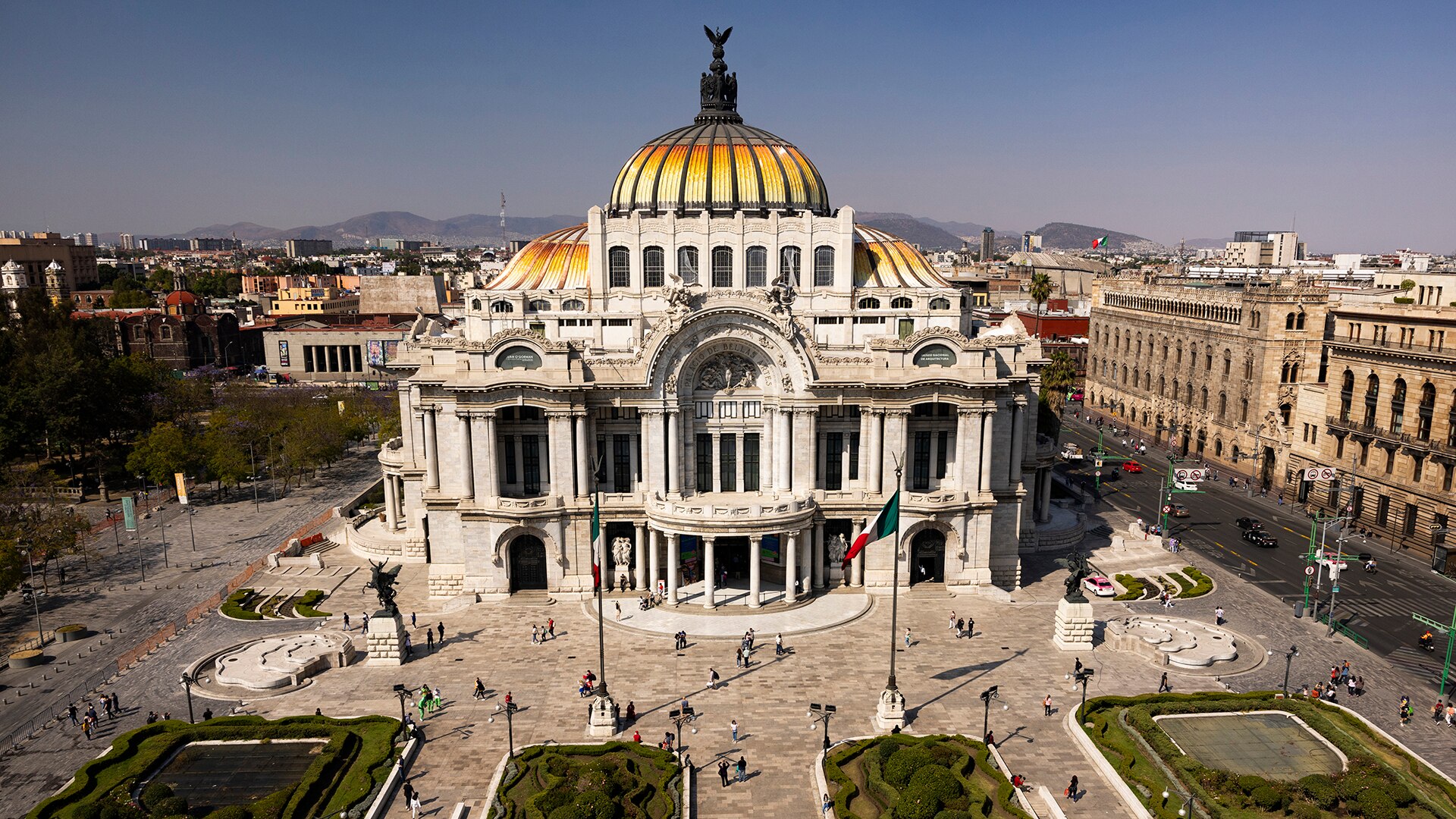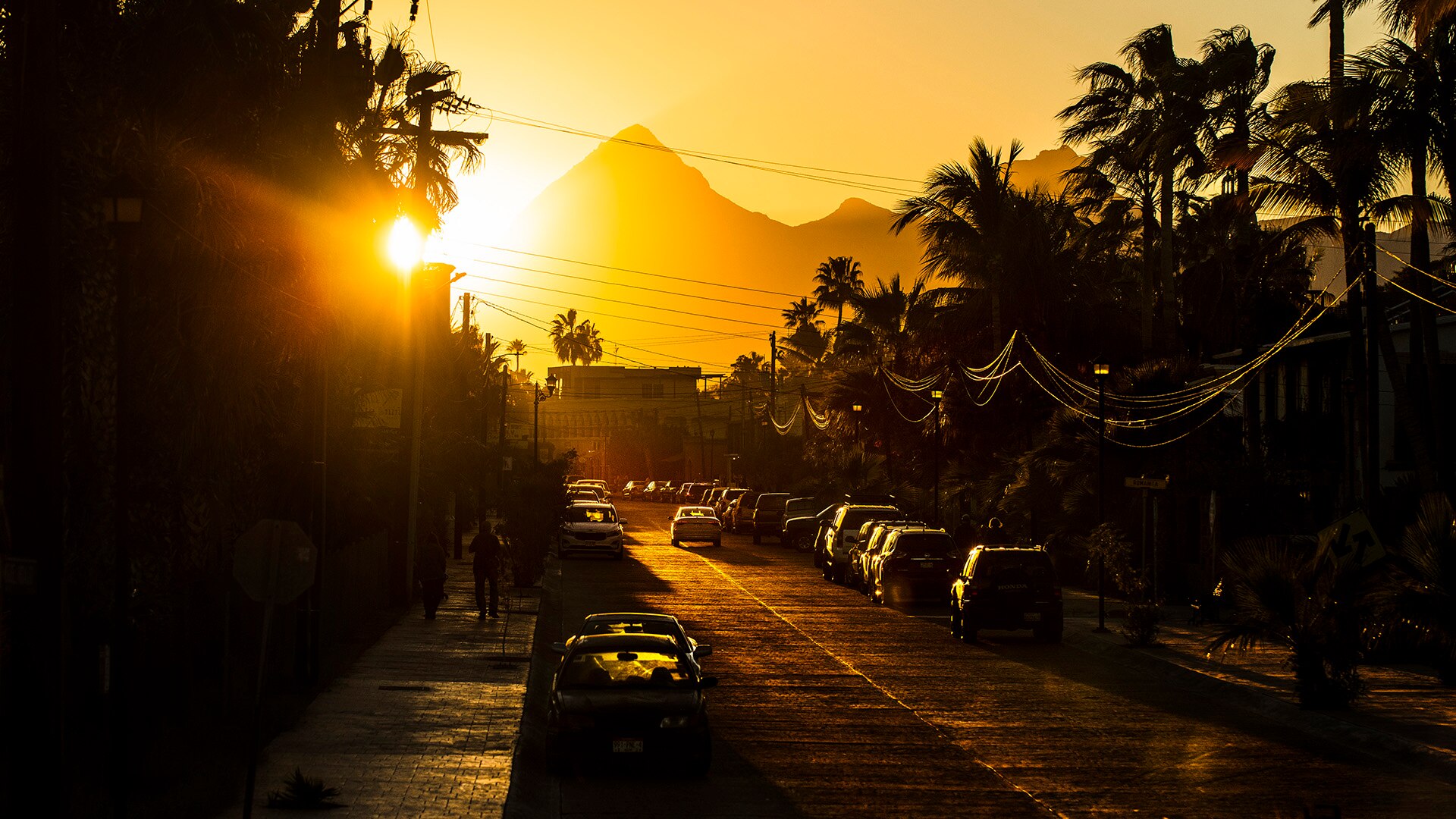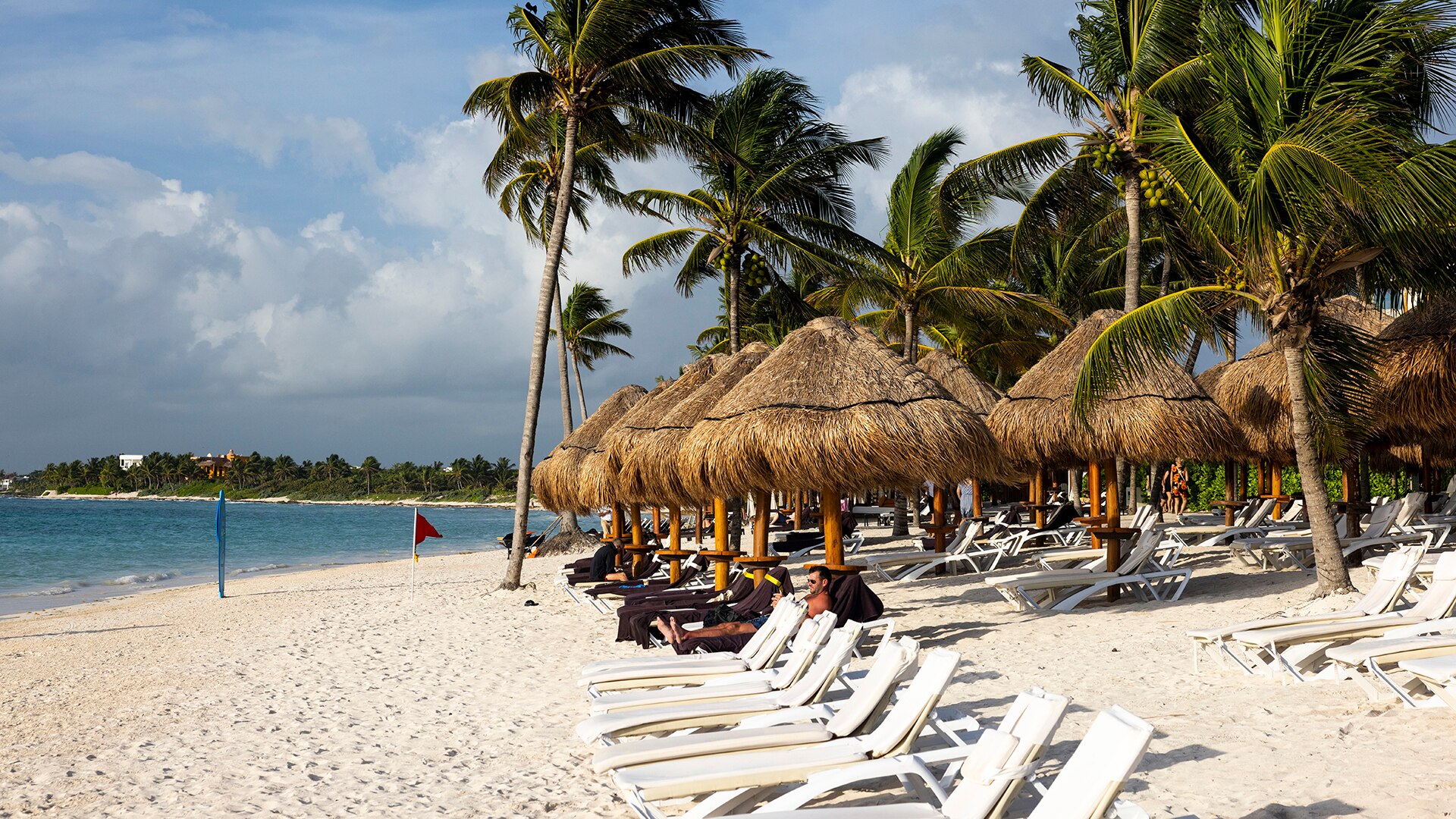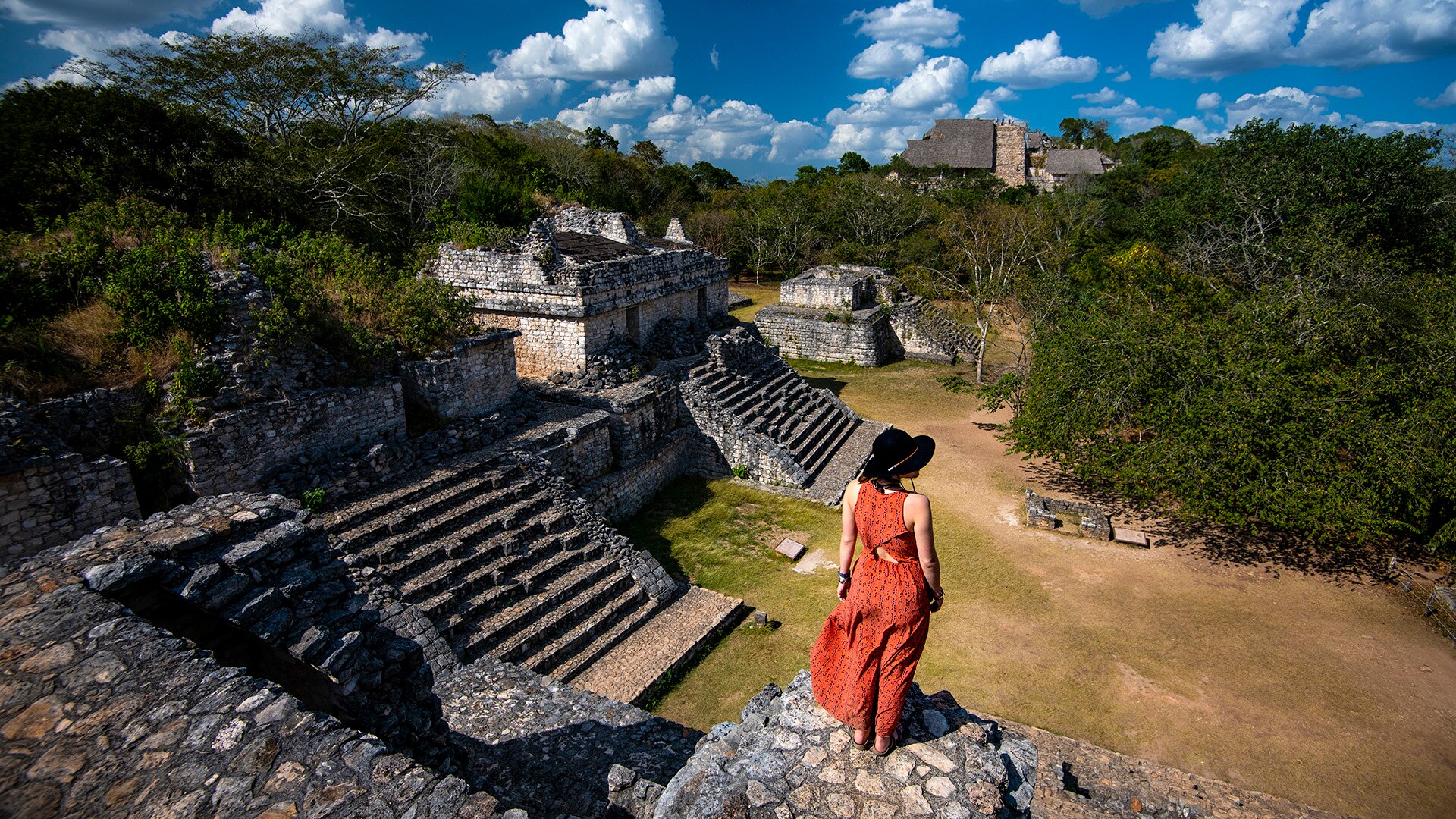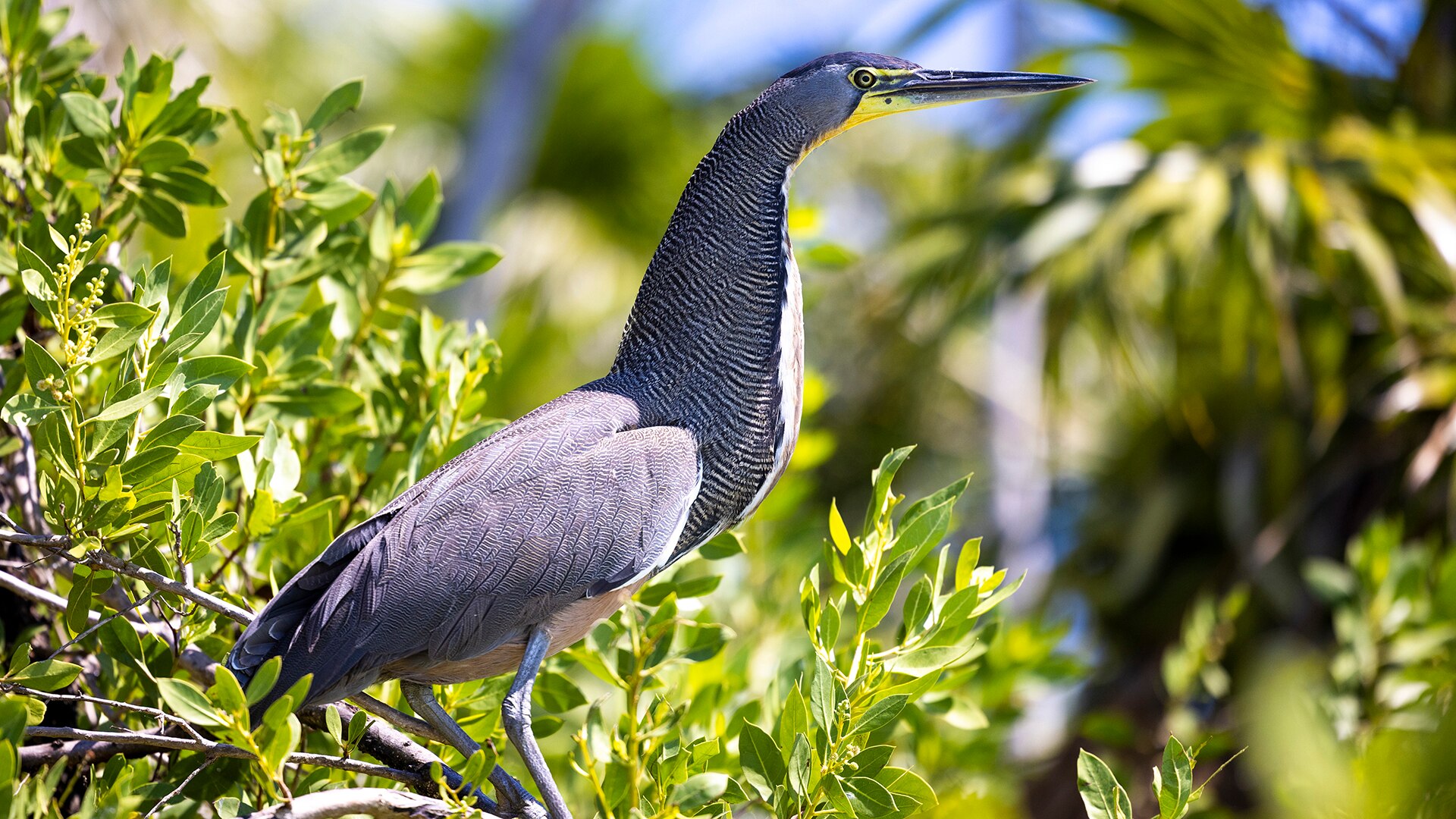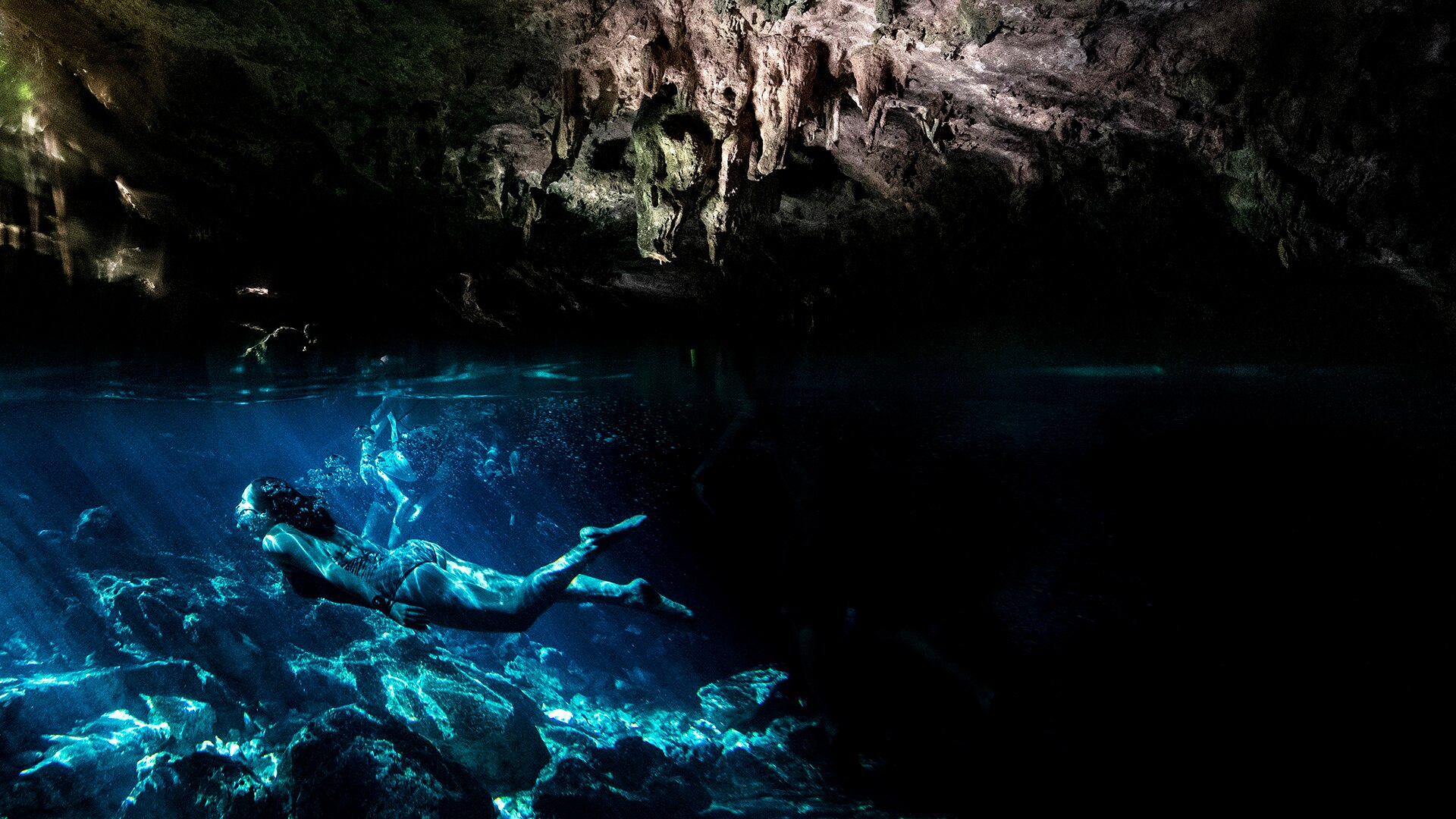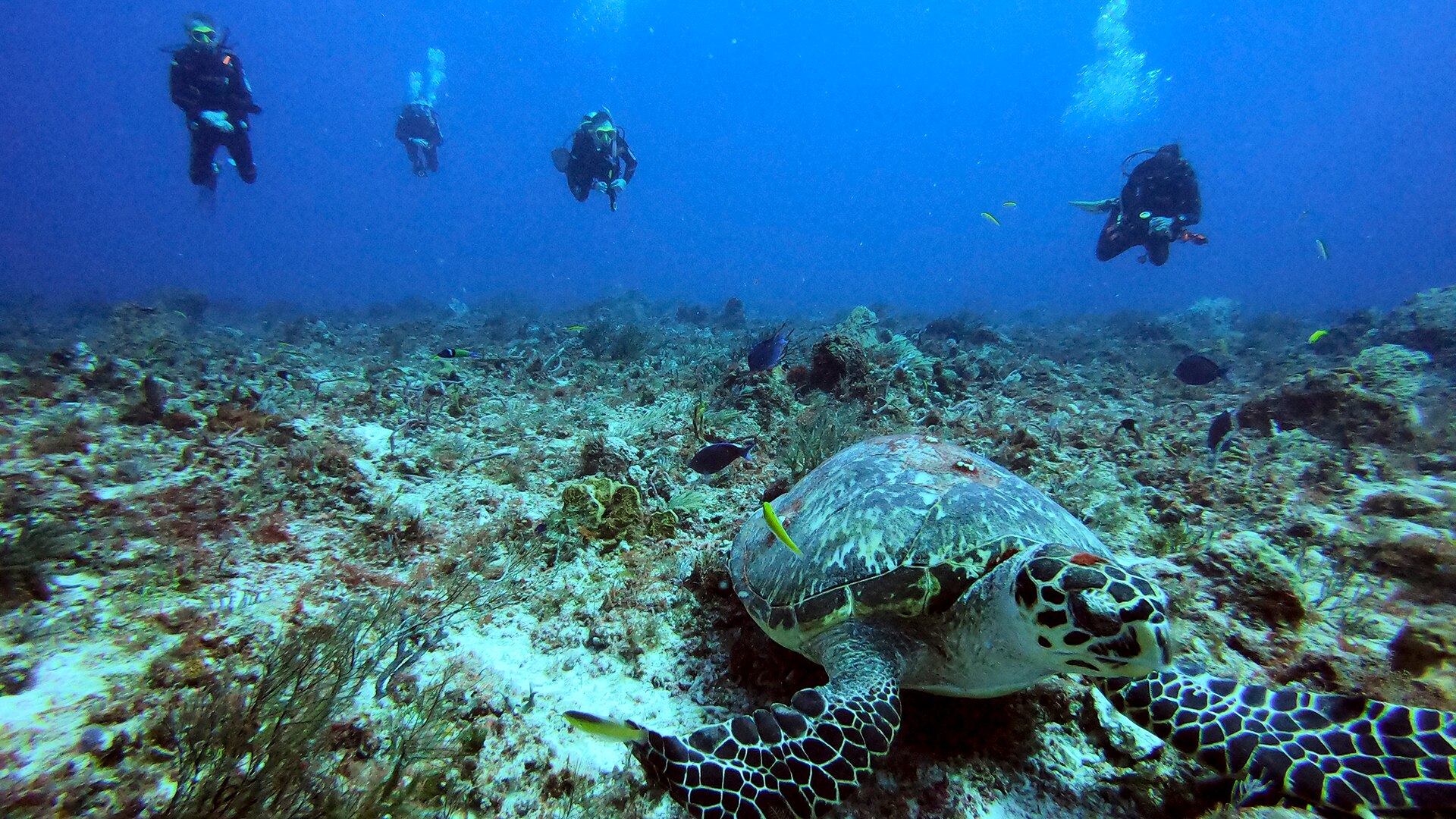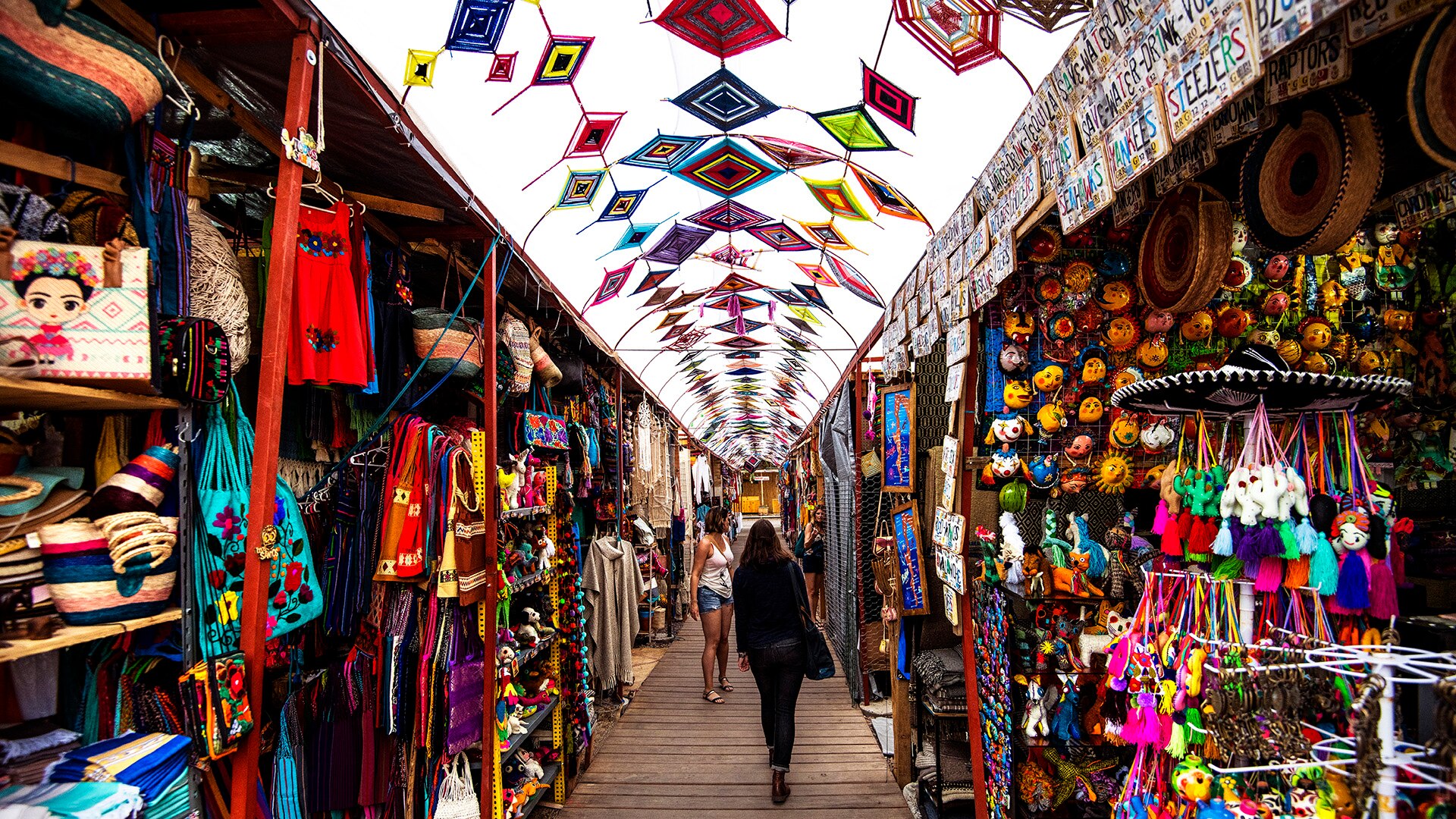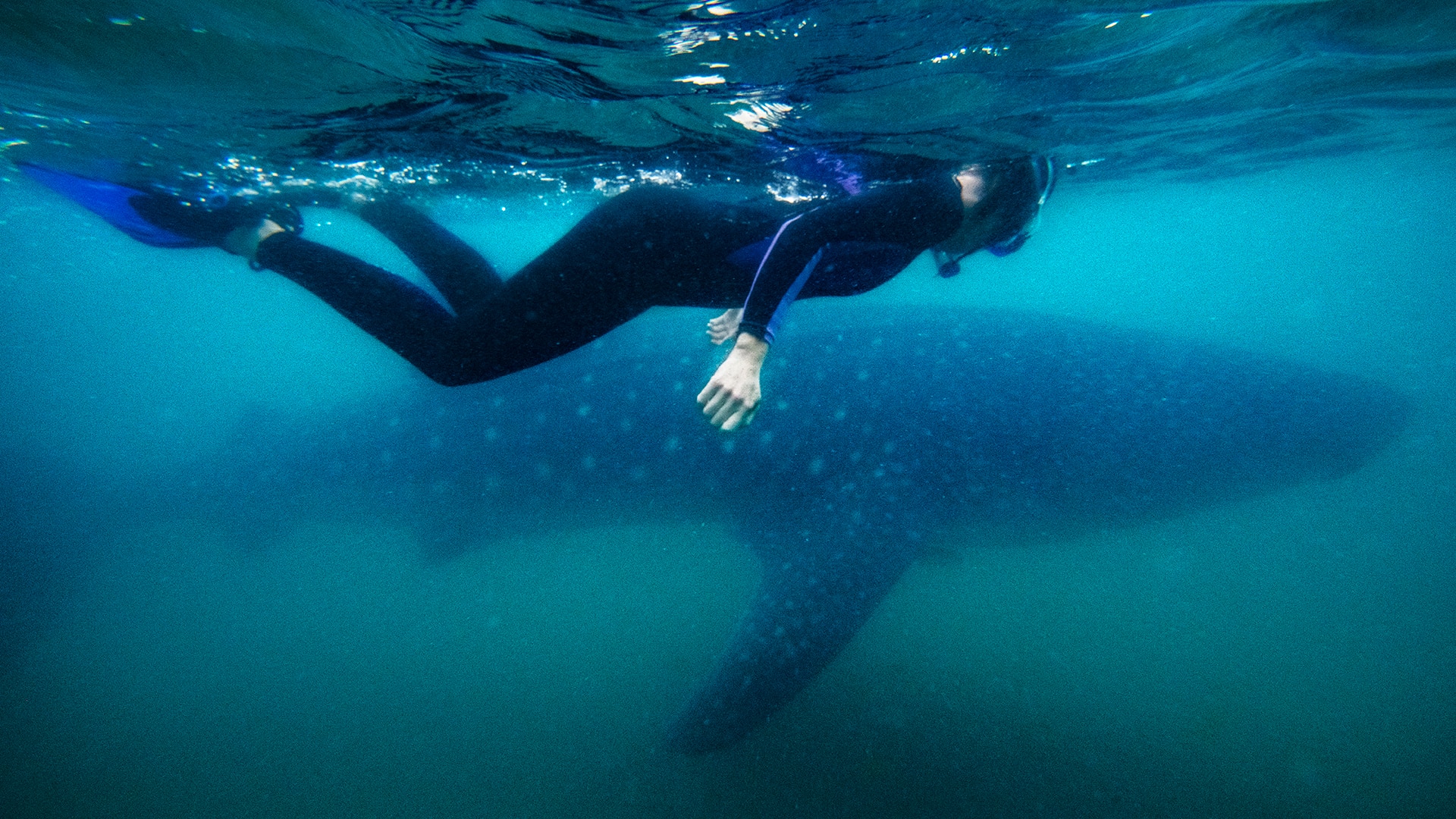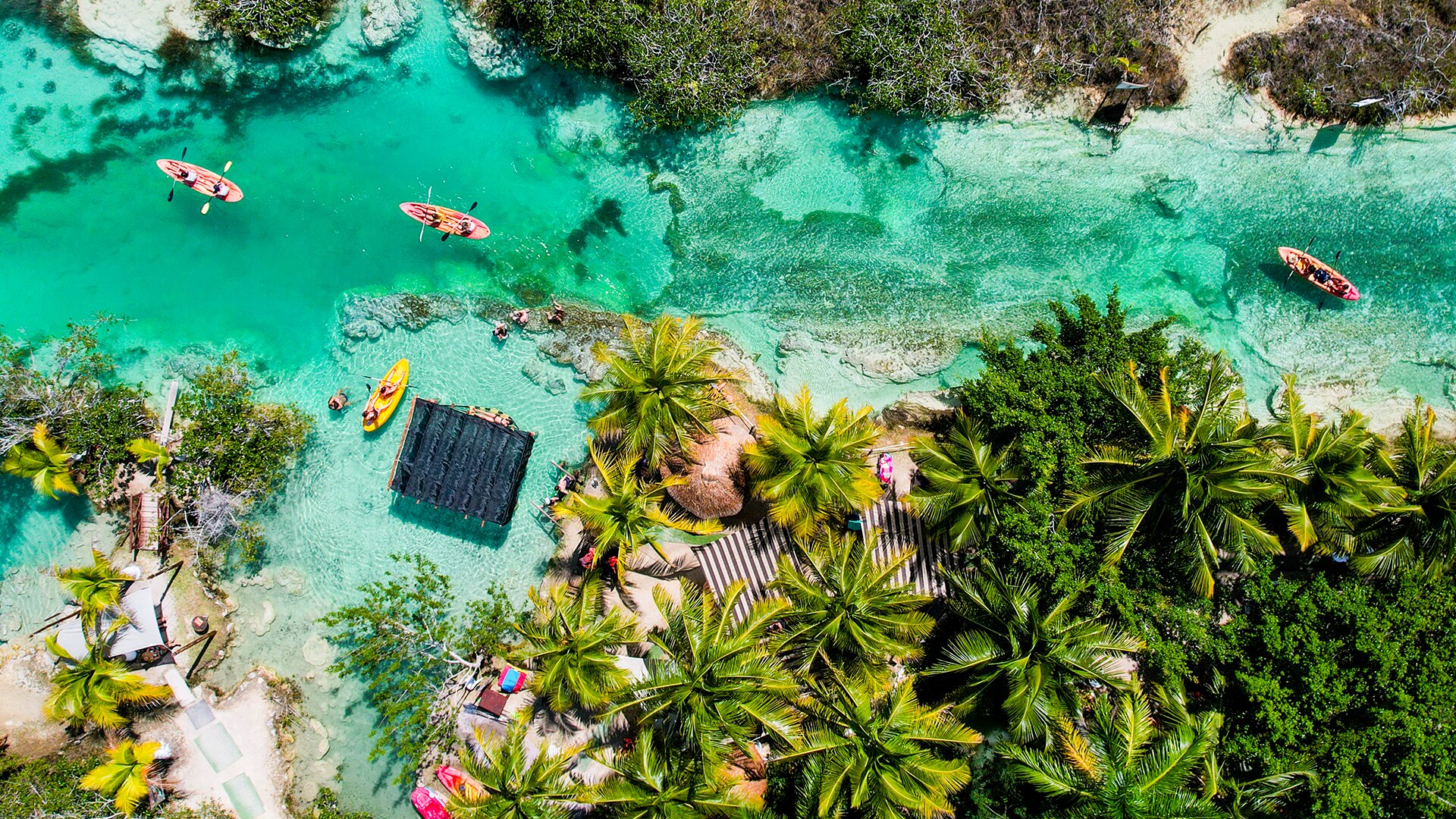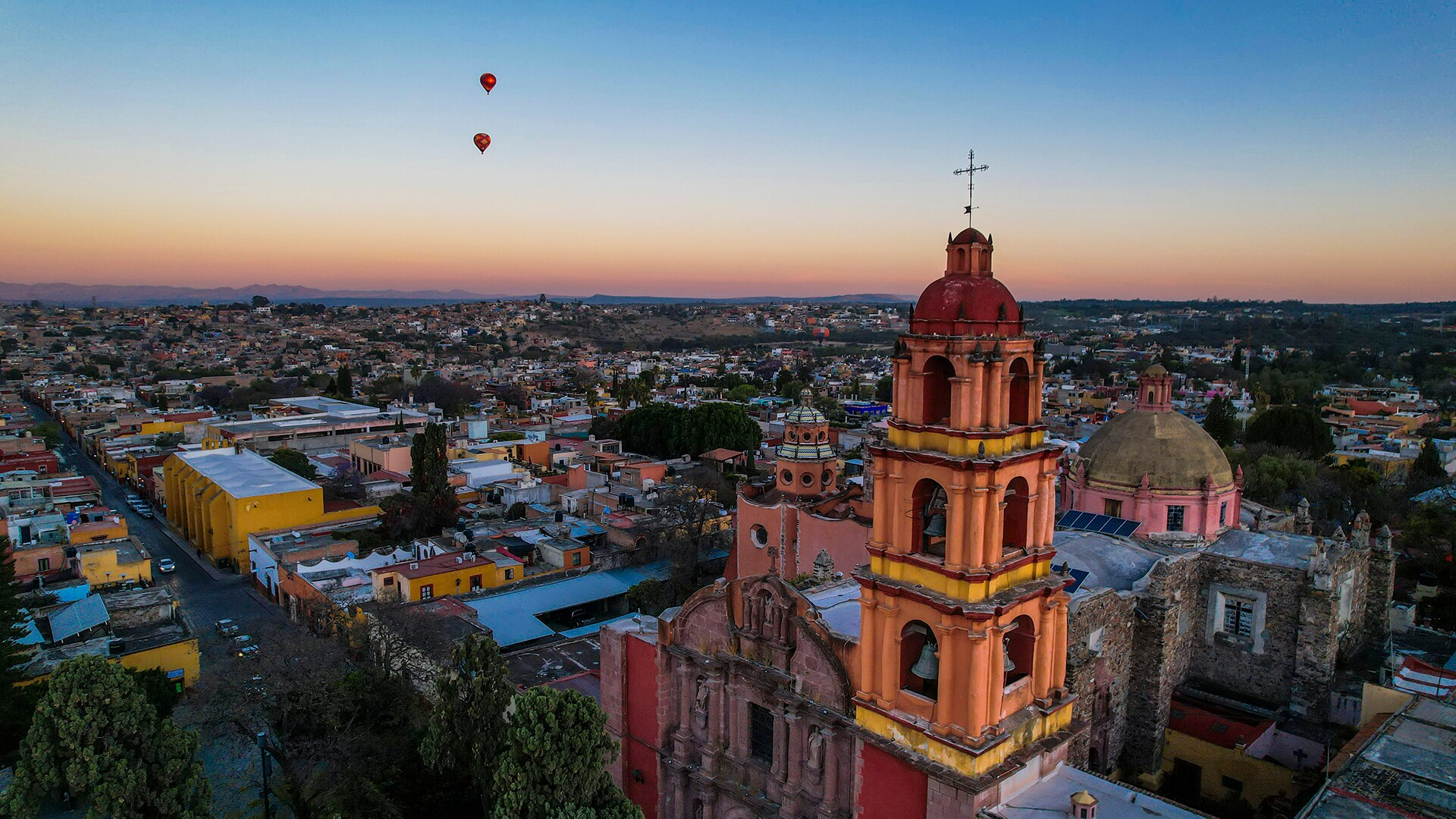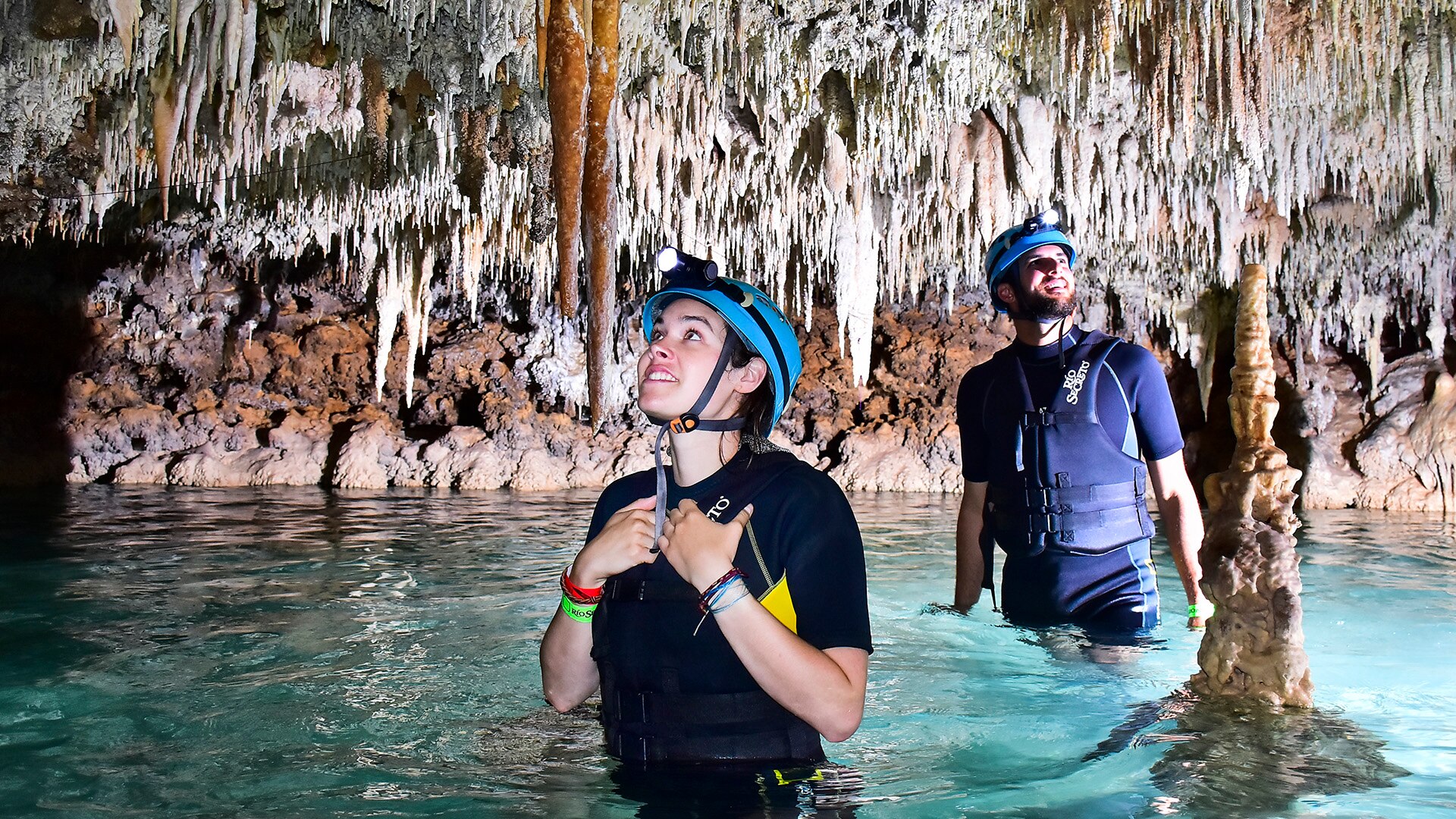Sinkholes and Underwater Caves Rival Tulum’s Caribbean Beaches

Writer Kassondra Cloos dives through the crystal-clear water at Cenote Dos Ojos.
Story by Kassondra Cloos; photos by Michael Ciaglo
Kassondra is a travel writer based in London. Michael Ciaglo is a photographer based in Denver.
In Mexico, clear water in limestone pits beckons travelers.
I white-knuckle the rope swing, arms high above my head, and stare about 20 feet down into a cenote — a deep, ancient limestone pit filled with water as clear as that which comes from your tap. Then I take a few steps back, close my eyes and run forward off the wooden platform. A scream escapes from me as the rope swings to the center of the sinkhole. Then I let go and drop, flailing, into the water.
As I bob up to the surface, I wipe the water from my eyes and smile. Time for another swing at Cenote San Lorenzo Oxman, about two hours west of Cancun.

A man swims in the water at Gran Cenote in Tulum.

Visitors to the Mayan city of Tulum stroll along Playa Ruinas below the site's main pyramid, El Castillo.
Swimming in Cenotes
For four days, my friend Michael and I make the most of our rental car as we shuttle between the past and the present around the Yucatan Peninsula, making frequent stops for cocos frios, chilled young coconuts filled with sweet water. For most of our trip, Tulum, a resort town with its own Mayan ruins and a bohemian vibe, is our base camp.
One morning, we rise early to visit the Tulum ruins in town, which feature their own public beach in full view of the archaeological zone. Another day, we make the 45-minute drive to visit the ruins at Coba at sunset, and share the massive complex with almost no one.
Every afternoon, we cool off at Caribbean beaches or at the cenotes. Thousands of years ago, the Mayans relied on cenotes for water to drink and for cleansing rituals and sacrifices. Today, many cenotes are popular tourist attractions, places where visitors can snorkel, chase catfish or SCUBA dive to explore the caves below the clear water.
All along Highway 180, we drive past countless signs beckoning travelers to dive into cenotes. Some are massive billboards; others are small slabs of faded plywood. The cenotes advertised on the latter are always the best, we were told by locals. For us, the cenotes rival the gorgeous beaches, even Playa Akumal, where Michael snorkels to snap photos of sea turtles as I lounge under a coconut tree.
The coast holds its own, to be sure, but at each cenote there’s an appealing sense of inherent reverence. Even when they’re crowded, most often whispers, rather than screams and shouts, reverberate off the cave walls. Not one cenote disappoints us.
By far, the best cenote is at Dos Ojos, which means “two eyes” in Spanish. The park features two large cenotes connected via an underwater pathway you can dive with a guide. I alternate between dipping below the water to stare as divers follow a guideline through a passageway and floating on my back to watch bats dart around the cave’s ceiling.

Gran Cenote in Tulum

A sea turtle swims in the shallow waters off Playa Akumal near Tulum.
Tulum Charms Visitors
In the evenings, Michael and I wander through Tulum, a present-day hipster paradise where many of the storefronts make perfect shots for Instagram. All along Avenida Coba, the main stretch, dozens of shops sell white macramé decorations, flowy apparel and large-brimmed hats, displayed on the sidewalk. Restaurants with white, open interiors feature egg-shaped wicker seats hanging from beams.
Those restaurants deliver far more than just appetizing décor. At Burrito Amor, I inhale an al pastor burrito, made with marinated pork cooked on a rotisserie. We gobble up colorful, sugared Mexican pastries in the bakery section of Chedraui, a supermarket. And at Taqueria Honorio, we fall so in love with the cochinita pibil tacos made with shredded pork that we eat there a second time.
One afternoon, we borrow bikes from our Airbnb and ride the path along Highway 15 to the public Tulum Beach, near the hotel zone on the coast. Along the way, a set of road signs shouts, “SI NO AHORA, CUANDO?” — "IF NOT NOW, WHEN?” That’s a perfect slogan for a road trip, the ideal question to ask before dismissing a detour, passing by an appealing restaurant or skipping a swim in a cenote.
We’re here — why not?

Playa Akumal
Related
Read more stories about Mexico road trips.
- Explore Food, Art and Architecture in Mexico City
- Every Hour Is Golden in Mexico’s Loreto
- Yucatan Peninsula Beaches
- Weekend Getaway From Mexico City to See Butterflies
- Must-Visit Mayan Ruins Near Cancun
- Wild Mexico
- Sinkholes and Underwater Caves Rival Tulum’s Caribbean Beaches
- Weekend Getaway to Mexico’s Playa del Carmen
- Todos Santos: A Colorful, Seaside Town in Mexico
- Meeting Wildlife Face to Face in the Sea of Cortez, Mexico
- The Hidden Gems of Mexico’s Yucatán Peninsula
- Road Trip to San Miguel Mexico
- Tour Mexico’s Río Secreto, an Underground River

